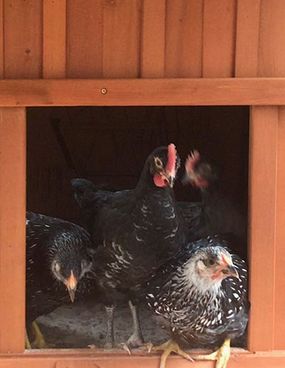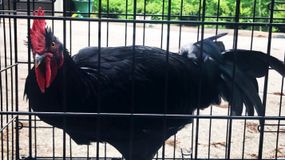Chickens go through several name changes from birth to adulthood Knowing the proper terms for a chicken’s age and gender helps chicken keepers communicate clearly This article will explain the various names for young female chickens.
Chick
A newborn chicken of either sex is called a chick Chicks are covered in soft down feathers and are unable to regulate their own body temperature. They require heat sources such as brooders or heat lamps. The term chick can be used for the first 2-6 weeks of a chicken’s life until the first feathers begin to emerge.
Pullet
Once a female chick develops feathers and starts looking more like a miniature chicken, she becomes known as a pullet. This term is used from around 2-20 weeks of age. Here are some key facts about pullets:
-
Pullets have a mix of feathers and fuzzy chick down. Their feathers are not fully developed.
-
They are still growing, but their bodies are more mature than chicks.
-
Pullets are able to regulate their temperature better than chicks. They no longer need supplemental heat sources.
-
Pullets gradually switch from high-protein chick starter feed to grower feed.
-
Most pullets start laying eggs around 18-20 weeks of age. They are still pullets when they first begin laying.
Hen
A female chicken over 1 year old is called a hen. Here are some traits of hens:
-
Hens have full sized, mature feathers with no down left.
-
They have reached their adult size and weight.
-
Hens lay eggs regularly, about 1 per day. Their eggs are full sized.
-
Hens eat layer feed which is formulated for egg laying birds.
Chick → Pullet → Hen
The key events are losing the chick down, reaching sexual maturity, and completing the first year of life. Let’s look at some less common terms you may encounter.
Other Female Chicken Terms
Started Pullet
A started pullet is a young female sold by a hatchery or farm. Rather than selling unsexed chicks, started pullets are guaranteed to be females around 16-20 weeks old. Their age makes them close to the point of laying eggs.
Juvenile
A juvenile is a young chicken between the chick and adult stages. It is usually a pullet but can also refer to a cockerel.
Biddy
This old-fashioned term refers to a hen or pullet. It likely originated from the sounds people made when calling chickens.
Peep
Peep can refer to either a chick’s sound or an individual chick itself.
Broody
A broody hen is one who stops laying eggs and sits in the nest to incubate eggs.
Knowing chicken terms helps avoid confusion when discussing poultry. Female chickens have distinct names depending on their age and reproductive status. The main stages are chick, pullet, and hen. Backyard chicken keepers should be familiar with these labels in order to communicate clearly with other farmers and understand their flock’s developmental needs. With the proper terminology, raising chickens becomes much easier.

Identifying an Adult Female vs. an Adult Male Chicken
When chicks mature, chicken breeders use a few visual signifiers to distinguish roosters from an adult hen.
The most obvious features between them are the rooster combs and wattles: flaps of skin that indicate high levels of testosterone and may also signal that the rooster is ready to fight off any male rivals. Most breeds of roosters feature a bright red comb for maximum visibility.
Other common indicators are the development of leg muscles and orientation of feathers. As they become ready to lay eggs, most adult female chicken breeds develop thicker legs with short, stubby claws. Meanwhile the same breed of roosters tend to retain long legs with sharp claws on their feet for defense.
Hen feathers tend to be soft and plush all along the body, while the rooster grows coarser, more exaggerated feathers. Hens keep short, rounded hackle feathers for their whole life, while most male chickens develop long and ornate hackle feathers along the ridge of their back.
Then there are the long saddle feathers, which populate the tail area and either point rearward or fan out to make the rooster appear larger to foes.
Can Female Chickens Change Sex?
Miss Lucille was a sweet little pullet (young hen), who found a cozy home in the chicken coop of Kristi Allens (not her real name) Powder Springs, Georgia, backyard. Initially, things appeared to be status quo with the young exchequer leghorn cross.
After observing her for a time, however, Allen noticed Miss Lucille was growing a comb. Although both sexes of the breed can have them, Allens instincts told her that perhaps something wasnt quite standard, so she sought the help of a local farmer. Allen recalls:
Advertisement “The farmer did all of the checks to confirm Miss Lucille was a miss. She had no long saddle feathers [pointy feathers at the base of the tail], no aggression, didnt jump or react in the presence of all the hens and roosters, and when she was laid back in the farmers hand, she stuck her legs out straight and just laid there. All are old timers tricks to identifying adult roosters since theres no definitive way to tell until they mount another chicken or crow, aside from lab testing.”
Miss Lucille had “failed” the rooster test. However, later on, Allen arrived home to a mess of feathers in the backyard, an unusual event because female chickens dont usually molt until around 18 months. She also started exhibiting more aggressive behavior.
“She began acting more temperamental, but I attributed that to her molting, as it can be quite uncomfortable for chickens,” she says. “I was worried about her health.”
Although strange things were certainly afoot in Miss Lucilles world, none of them were health-threatening. When her feathers grew back, they were pointed saddle feathers, signaling a transition to an adult male chicken. Her hackles and tail feathers had also undergone some major changes.
“She went from being your typical hen to a rooster with beautiful, long tail feathers and pointy hackles. Her gait changed, and she was definitely at the top of the pecking order,” Allen says.
Further consultation advised a wait-and-see approach. One farmer told her, “Just because she now looked like a rooster didnt mean she was one. I needed to wait until she crowed or mounted one of the hens.”
Ironically, Miss Lucille became more mellow and friendly. “But then her comb kept getting bigger and redder. For every indicator she might still be a she, there was another for her being a he,” she says.
Finally, the irrefutable proof came at around 5 months of age: The rooster literally crowed. “Every day the crow grew louder and stronger. It was official that Miss Lucille was now Mr. Lucille,” Allen says.
“And to his credit, he assumed the role wonderfully. If the girls were low on water, hed crow and let me know to get on it. Hed lead the charge up to roost at night. Hed wake us up with his song early each morning.”
What Is A Female Chicken Called?
FAQ
What is the name of a young female chicken?
Pullet: A young female chicken, under 1 year old.
What is an immature female chicken called?
A mature female chicken is called a hen. A chick is a newly hatched chicken. An immature male chicken is called a cockerel and an immature female chicken a pullet.
What is a pullet vs. chick?
While baby chicks will need about six months to grow before they begin laying, pullets are on the verge of being old enough to produce eggs. “With pullets there is much less of a wait because pullets typically don’t start to lay until they are six or eight months old.
What do you call a younger chicken?
The males are roosters/cocks, and the females are hens. Young hens are called pullets, young roosters are called cockerels. Very young/newborn chickens of either sex are called chicks.
What is a young female chicken called?
A young female chicken is called a Pullet. This is the term that is typically given to female chickens that are less than a year old. When they are laying eggs they are classified as hens. There are various other names, terminology, and classifications for chickens, here’s a breakdown of what all the different names mean:
What is a baby chicken called?
Peep – Another term for baby chickens. Pullet – A female chicken that is less than a year old and typically not laying eggs yet. Point-of-Lay – A point-of-lay is a female chicken that is about to start laying. This is breed-dependant, but will typically be around 5 months of age.
What are the different terms for chicken?
There are so many different terms for chickens–juvenile, cockerel, pullet, chick, hen, rooster, peep, biddy, started pullet, point-of-lay pullet, broody, brood, flock—what do they all mean? There ARE a lot of different terms for chicken, aren’t there? It can be a little confusing, especially when you’re just starting out.
When a female chicken becomes a hen?
A female chicken becomes a hen when she starts laying eggs and is mature. Cockerel – A cockerel is the male equivalent of a Pullet. It’s an immature male that hasn’t started mating yet. Capon – A capon is a neutered rooster. Rooster – Rooster, or cock, is the term for a fully mature male chicken.
What is a juvenile chicken called?
Young chickens of both sexes–pullets and cockerels–can be called “juveniles” or “juvenile chickens.” So what’s the age difference between a chick, and a juvenile, pullet or cockerel?
What is a female chicken called when they stop laying?
Even when they stop laying, though, adult female chickens are still called hens. A hen sitting in her coop. Credit: Songserm What are Layers and Broilers?


